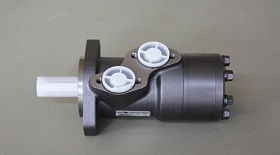Hydraulic motor
The hydraulic motor is an actuator of a hydraulic system. It converts the liquid pressure energy supplied by the hydraulic pump into the mechanical energy (torque and speed) of its output shaft. Hydraulic motor is also known as oil motor, which is mainly used in injection molding machinery, ship, hoist, construction machinery, construction machinery, coal mine machinery, mining machinery, metallurgy machinery, ship machinery, petrochemical, port machinery.
From the point of view of energy conversion, hydraulic pump and hydraulic motor are reversible hydraulic components. The input of working liquid to any kind of hydraulic pump can make it into hydraulic motor condition. Conversely, when the main shaft of the hydraulic motor is driven and rotated by external torque, it can also be changed into the hydraulic pump condition. Because they have the same basic structural elements - a closed and periodic volume and the corresponding oil distribution mechanism.
However, because the working conditions of hydraulic motor and hydraulic pump are different and their performance requirements are different, there are still many differences between the same type of hydraulic motor and hydraulic pump. Firstly, the hydraulic motor should be positive and reverse, so the internal structure should be symmetrical. Hydraulic motor speed range needs to be large enough, especially for its minimum stable speed requirements. Therefore, it usually uses the rolling bearing or the static pressure sliding bearing. Secondly, because the hydraulic motor works under the condition of input pressure oil, it does not have to have self-absorption capacity, but it needs certain initial tightness to provide the necessary starting torque. Because of these differences, the hydraulic motor and hydraulic pump are similar in structure, but it can not work reversible.



